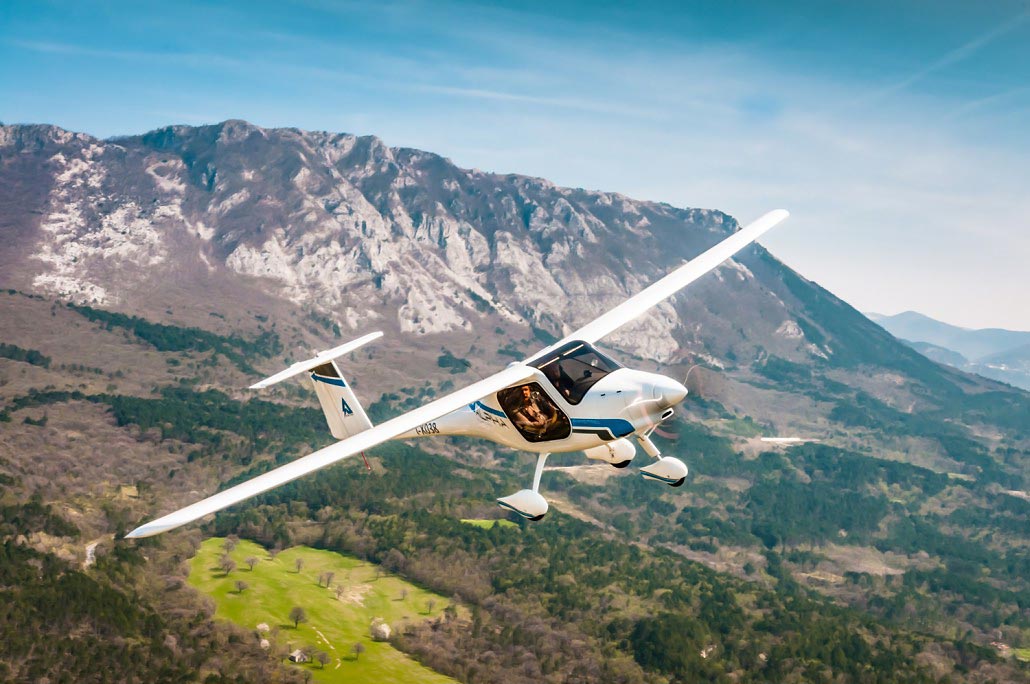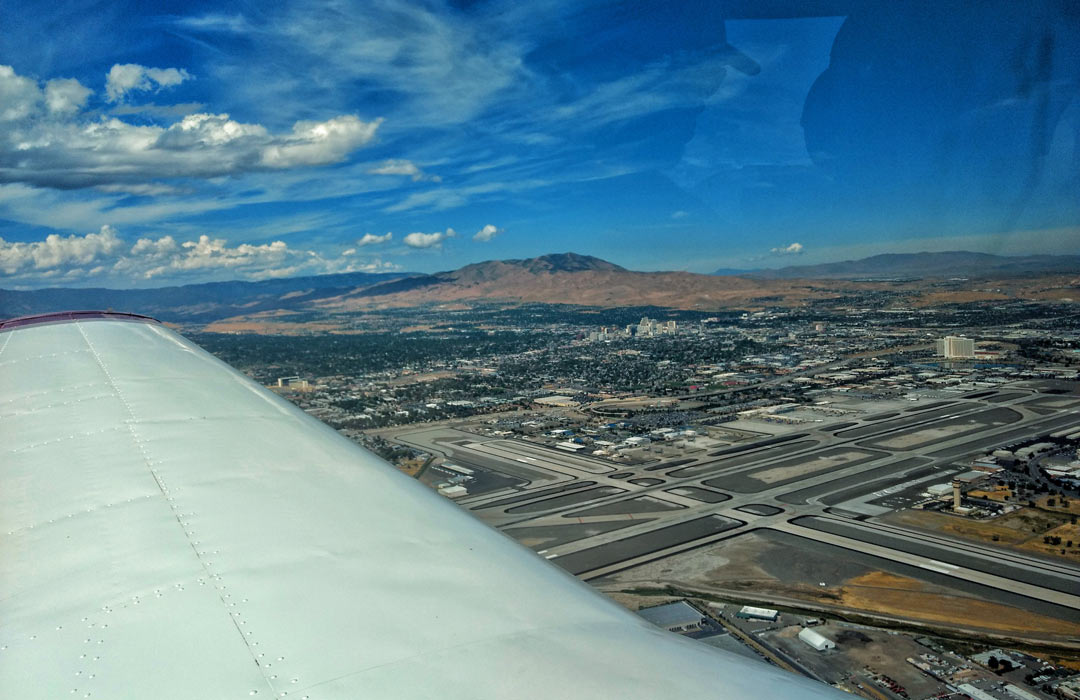What Would Elon Musk’s Airplane for Private Pilots Be Like?
Let’s call it the Model Fly, a green competitor for all the Cessnas and Pipers out there. It would probably be a low wing aircraft, leaving plenty of room for the gullwing doors to slide open above the cockpit. The door handles would disappear in the door for extra aerodynamicity during flight, as would the wheels. By default, it would feature a glass cockpit. I mean, a full glass cockpit, making the most seasoned A380 pilot raise his eyebrows whilst thinking “now this is a glass cockpit.” And it would most certainly be an all electric aircraft — no combustions in a Musk vehicle. The top model would feature a Bioweapon Defense Mode spitting out oxygen masks with built-in HEPA filter when a polluted particle or — at higher altitudes — a pressure drop is detected.
In a hangar, the Model Fly would be able to park itself amidst its avgas-powered acquaintances. Via a technique called machine learning, the aircraft would learn to autonomously taxi to its favorite spot while smirking at towbars. At international airports, superchargers would be installed. That way, private pilots operating a Model Fly could happily minimize their parking time and thus avoid astronomic ground charges.
Inevitably, a Model Fly would sooner or later collide with a white or blueish drone. It would be discovered that, due to an unfortunate alignment of sun and moon, drone and plane, the latter’s built-in sensors were unable to distinguish the drone from the bright sky, hitting it as a consequence. Media would completely disregard the fact that the shredded drone was flying in forbidden airspace and seriously question the safety of the Fly’s autopilot. Despite the millions of safe flights that were carried out by ultra satisfied pilots on autopilot, investigations would follow to prevent further machine errors.
Why Electric Aircraft Make Pure Sense
In a world that is becoming electric, aircraft are no exception. Electric aircraft are almost carbon neutral and can greatly reduce the cost of flying. Moreover, they could help to reduce the number of accidents involving small aircraft. Consider the simplicity of the gas engine in an average winged two or four-seater: a carburetor, a propeller, oil and fuel systems, magnetos, and an alternator. Far from rocket science, and closer to lawn mower science. And that’s a good thing as simple things are easy to maintain and as a result less likely to fail in flight. Now consider the same two or four-seater with electric propulsion: a new round of simplicity is suddenly introduced. For instance, one can drop the carburetor and forget about incidents caused by icing. Mixture lean or rich? Irrelevant. No need to switch between fuel tanks or worry about fuel pressure either.
Then what about range? Rumor has it that some eco-drivers develop a new fear called range anxiety. And in our blue skies, there are no slow truck (p)lanes for the Model Fly to sneak up behind, as to conserve a few watts. Neither are there fuel pumps, but as long as energy consumption is consistent and batteries can be monitored in detail, range would be equally predictable. Currently, the power-to-weight ratio is still in favor of avgas-powered engines, but the race for the perfect battery is on. Largely driven by the automotive industry, fuel cells are becoming increasingly efficient while recharge times go down.
Why Small Hybrid Plug-in Planes are Probably Not a Good Idea
Remember the Harrier? It’s tactical jet capable of vertical/short takeoff and landing (V/STOL) operations thanks to a revolutionary engine design. Its engine employs a thrust vectoring system that uses swiveling nozzles, giving the Harrier thrust both for lift and forward propulsion. As such, the Harrier can take off vertically using the same engine that is used during flight — there is no dead weight to carry once airborne.
Indeed, airplanes are designed to be light. Any (dead) weight that can be saved will have a positive impact on performance and vice versa. Even hybrid car manufacturers make compromises to combat the extra weight, for instance, by limiting the capacity of the fuel tank and/or battery. In a small sport aircraft, it will be particularly hard to justify the weight penalty of two engines (gas and electric) and two fuel sources (avgas and batteries). Furthermore, chaining multiple engines complicates an aircraft’s design and increases cost, even though one can argue a secondary engine introduces some redundancy (and thus safety).
Are There Any Consumer-grade Electric Aircraft Out There?
Short answer: yes. For starters, several prototypes have been built. Think of the Solar Impulse, Airbus E-Fan and NASA’s X-plane concepts. It is still a debate whether electric aircraft should have a completely different design than their gas variants, typically translating to concept planes with a multitude of smaller propellers replacing a large single one in the front. Others have illustrated that sticking to an original design and “simply” embedding electric propulsion in it works too.
Most notably, Pipistrel — the Slovenian aircraft builder — has followed this approach in its WATTsUP prototype (built in collaboration with Siemens AG who provided the main electric propulsion parts). This prototype evolved into the Alpha Electro, a two-seat electric trainer with an endurance of 1 hour (and 30 minutes reserve). For Pipistrel, this is the second electric aircraft to result in a commercial product. Recently, a proof of concept of the Sun Flyer was also unveiled with a similar mission: making general aviation more affordable with an electric trainer. The strong focus on green trainers is a logical first step as endurance is not a main concern in the circuit.
Also worth mentioning is the Long-ESA, an electric version of Rutan’s Long-EZ kitplane, which is currently the fastest electric plane in the world. While this is not a consumer-grade model, it illustrates for aircraft what Tesla already showed to the world for cars: one does not need a V6 engine to deliver performance.
Featured Image: Pipistrel / Matjaz Milivec















Leave a Reply